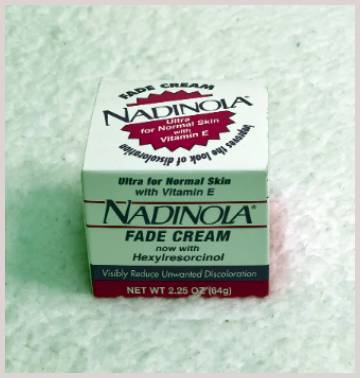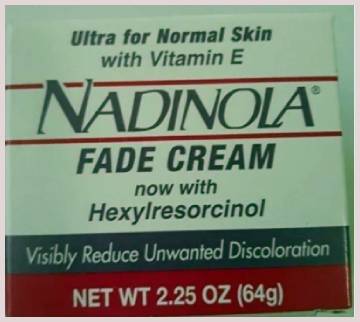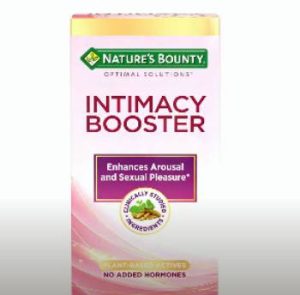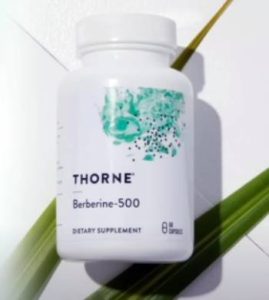I’ve always been on a quest for smoother, more even-toned skin—haven’t we all at some point? Dark spots from acne, sun exposure, and life’s little battles have sent me rummaging through skincare aisles more times than I’d like to admit.
Two products that caught my eye (and my wallet) are Nadinola Fade Cream and Palmer’s Skin Success Fade Cream. In this article, I’m spilling my real-user experience, breaking down the pros and cons, and pitting these two against each other to help you decide which might be your skin’s new best friend.
Let’s get into it!
A Brief Comparison Table
| Feature | Nadinola Fade Cream | Palmer’s Skin Success Fade Cream |
| Key Ingredients | Niacinamide, Hexylresorcinol | Niacinamide, Retinol, Vitamin E |
| Hydroquinone | None (Hydroquinone-free) | None (Hydroquinone-free) |
| Skin Type Suitability | Normal to Dry | All Skin Types (Oily option available) |
| Texture | Creamy, lightweight | Thick, rich |
| Scent | Mild, slightly chemical | Pleasant, cocoa butter vibe |
| Size | 2.25 oz | 2.7 oz |
| Price (Approx.) | $8–$12 | $7–$10 |
| Time to See Results | 3–6 weeks | 2–6 weeks |
| Moisturizing Power | Moderate | High |
| Availability | Limited (Walmart, Amazon) | Widely available |
My First Impressions: Packaging and Promises

When I first picked up Nadinola Fade Cream, the small, no-frills tube felt like something my grandma might’ve used back in the day.
It’s got that retro vibe, but the label promises big: fading dark spots and restoring radiance with a hydroquinone-free formula.
I was intrigued—especially since hydroquinone’s gotten a bad rap lately.
The ingredients list boasted niacinamide and hexylresorcinol, two buzzwords I’d heard skincare gurus rave about.
Then there’s Palmer’s Skin Success Fade Cream.
The sleek, modern jar immediately screamed “luxury on a budget.”
I’ve always had a soft spot for Palmer’s cocoa butter products, so the familiar branding pulled me in.
It’s packed with niacinamide, retinol, and vitamin E, and the claim of visible results in as little as two weeks had me raising an eyebrow. Could it really deliver that fast? I was ready to put it to the test.
Breaking Down the Ingredients: What’s Working Under the Hood?
Let’s talk about what’s inside these creams, because that’s where the magic (or lack thereof) happens. Nadinola’s got niacinamide, a superstar that’s supposed to brighten skin and tackle hyperpigmentation by calming inflammation.
Then there’s hexylresorcinol, a lesser-known player that promises to fade dark spots while boosting antioxidants to protect my skin from free radicals. The rest of the formula is a mix of emollients like shea butter and synthetic moisturizers—nothing too fancy, but solid.
Palmer’s, on the other hand, feels like it’s bringing a bigger squad to the fight. Niacinamide’s there too, but it’s teamed up with retinol—a heavy hitter for cell turnover and fading stubborn marks.
Vitamin E jumps in to hydrate and soothe, while cocoa butter gives it that signature richness. I noticed Palmer’s also offers an oily skin version with a matte finish, which is a nice touch if you’re prone to shine.
Both skip hydroquinone, which I appreciate since I’ve heard it can irritate sensitive skin or even cause rebound darkening if misused. But here’s where I started wondering: does Nadinola’s simpler lineup hold its own against Palmer’s more robust blend?
Application And Feel: The Daily Grind

Slathering on Nadinola feels like a breeze.
The cream’s lightweight and sinks into my skin without much fuss.
It’s not greasy, which is a win, but it doesn’t leave me feeling super hydrated either.
I’ve got combination skin—oily T-zone, dry cheeks—and it works fine, though I sometimes layer a moisturizer over it at night.
The scent’s subtle but leans a bit chemical, like a faint whiff of science lab. Not a dealbreaker, but not exactly spa-like.
Palmer’s, though?
It’s a whole different vibe.
The cream’s thicker, almost buttery, and you can smell that cocoa butter goodness right away. It feels indulgent, like I’m pampering myself, but it takes a minute to rub in.
Once it’s on, my skin’s soft and hydrated—almost too much if I’m using it during the day under makeup. I’ve stuck to nighttime use mostly, and it’s become a cozy part of my routine. Oily skin folks might find it heavy unless they grab the matte version.
Pros of Nadinola Fade Cream: Why I Liked It

Nadinola’s got some serious strengths.
First off, it’s hydroquinone-free, which gives me peace of mind—no worrying about harsh side effects.
The niacinamide and hexylresorcinol combo feels modern and science-backed, and after about four weeks, I noticed my acne scars looking less angry.
It’s not a miracle worker, but it’s steady.
The lightweight texture’s a plus too—I hate feeling like my face is suffocating under product.
And at $8–$12 for 2.25 ounces, it’s wallet-friendly for what it does.
Another thing? It’s easy to apply morning and night without clogging my pores. I didn’t break out, which is huge since my skin’s picky. For anyone with mild hyperpigmentation, this could be a solid pick.
Cons of Nadinola Fade Cream: Where It Fell Short
But it’s not all sunshine and rainbows. Nadinola’s moisturizing power is just okay—my dry patches still begged for extra help, especially in winter.
The scent’s a bit off-putting if you’re sensitive to smells, and I wish the tube was bigger; I ran out faster than expected. Availability’s a pain too—it’s not on every shelf like Palmer’s. I had to hunt it down online, which isn’t ideal when you’re in a pinch.
The biggest letdown?
Results took longer than I hoped. At six weeks, my dark spots were lighter, but not gone. If you’ve got stubborn marks or melasma, you might need something stronger.
Pros of Palmer’s Skin Success Fade Cream: What Won Me Over

Palmer’s stole my heart in a few ways.
That rich, hydrating formula is a dream for dry skin—my cheeks felt plump and happy after one use.
The cocoa butter scent’s a mood-lifter, and the niacinamide-retinol duo started fading my sunspots in about three weeks.
Three weeks!
That’s faster than Nadinola, and I could see the difference in the mirror.
It’s widely available too—Walmart, Target, you name it—and the $7–$10 price tag for 2.7 ounces feels like a steal.
I also love that it’s formulated for all skin types. My friend with oily skin swears by the matte version, while I stick to the original. Versatility’s a big plus in my book.
Cons of Palmer’s Skin Success Fade Cream: The Not-So-Great Parts
It’s not perfect, though. The thickness can be a lot—too heavy for daytime unless you’ve got dry skin like me. It left a slight sheen once, and my foundation slid right off.
The retinol’s a double-edged sword too; I had mild peeling around week two, which freaked me out until I dialed back to every other night. If you’re new to retinol, ease in slow.
And while it works fast for some spots, deeper pigmentation—like my old acne scars—still lingers. It’s not a total fix, so manage your expectations if you’re battling serious discoloration.
Also Read: Is Dermisa Skin Fade Cream Worth It?
Effectiveness: Which One Delivered for Me?
Here’s where it gets real: results. Nadinola’s slow-and-steady approach paid off over time. After six weeks, my skin tone was more even, and my smaller dark spots had faded about 50%. It’s not dramatic, but it’s progress.
I’d say it’s best for mild issues—think light acne marks or subtle unevenness.
Palmer’s, though, hit harder and faster. By week three, my sunspots were noticeably lighter, and by week six, they’d faded maybe 70%. The retinol’s a game-changer—it speeds up cell turnover, which Nadinola can’t match.
But those deeper scars? Both creams struggled, though Palmer’s edged ahead slightly. If you want quick wins, Palmer’s is your guy; if you’re patient, Nadinola holds its own.
Suitability for Black Skin: My Take

I’ve got medium-dark skin, so I was curious how these would work for me. Nadinola’s marketed for normal to dry skin, and it didn’t disappoint.
It faded my hyperpigmentation without irritation or that dreaded ashy look.
Hexylresorcinol seems gentle enough for darker tones, and I didn’t notice any uneven lightening—always a fear with fade creams.
Palmer’s claims to suit all skin types, and it mostly lives up. My cousin, who’s deeper-toned, used it too, and she saw her acne marks soften after a month.
The vitamin E and cocoa butter keep it nourishing, which is key for Black skin that can dry out fast.
That said, the retinol might spook sensitive folks—start slow if you’re melanin-rich.
Duration: How Long Until You See a Difference?
Timing’s everything, right? Nadinola took me about 3–6 weeks to see real change. The brand doesn’t promise a timeline, but user reviews align with my experience—patience is key. Palmer’s brags about two weeks, and I’ll give them credit: I saw hints of fading then.
Full results kicked in around 4–6 weeks, though, so don’t expect overnight miracles. Both need consistency—skip a day, and you’re just prolonging the wait.
Cost and Value: Bang for Your Buck
Nadinola’s $8–$12 price feels fair for 2.25 ounces. It lasts about a month with twice-daily use, so it’s not breaking the bank. Palmer’s, at $7–$10 for 2.7 ounces, stretches further—I got six weeks out of mine.
The extra goodies like retinol and vitamin E make it feel like a better deal, especially since it’s easier to find. Palmer’s wins on value, hands down.
Which One’s Worth It?
Stepping back, Nadinola’s a reliable choice if you’re after simplicity and gentle care. It’s less aggressive, which suits beginners or sensitive skin types, but it lacks the punch for stubborn spots.
Palmer’s brings more firepower with retinol and a richer formula, making it ideal for faster results and hydration lovers. It’s not flawless—oily skin folks might balk at the texture—but it’s got broader appeal.
For me, Palmer’s edged out Nadinola because I crave quick fixes and that moisturizing boost. But if I had milder issues or hated retinol’s sting, Nadinola would’ve been my pick. It’s all about what your skin needs and how fast you want to see change.
Also Read: Is Jaysuing Snow Bleach Worth It?
FAQ Section: Quick Answers To Your Burning Questions
Yes, it lightens dark spots and uneven areas, but it won’t change your overall skin tone drastically—just evens things out.
Yep, it fades dark spots and hyperpigmentation over time, giving a brighter, more even look without bleaching your natural color.
You might see results in 2 weeks, but 4–6 weeks is more realistic for noticeable fading, based on my use.
Absolutely—it works well on Black skin, fading marks while keeping it hydrated, though ease into the retinol if you’re sensitive.
Conclusion: Your Skin, Your Choice
So, there you have it—my unfiltered take on Nadinola vs. Palmer’s Fade Cream. I’ve laid out the good, the bad, and the in-between from my own mirror time. Nadinola’s your steady, gentle pal for a slow burn to brighter skin, while Palmer’s is the bold, fast-acting buddy that hydrates like a champ.
You’ve got to weigh what matters most—speed, moisture, or simplicity—and pick the one that vibes with your skin’s story. Try one, see how it feels, and let me know how it goes—I’m rooting for you to love the skin you’re in!



